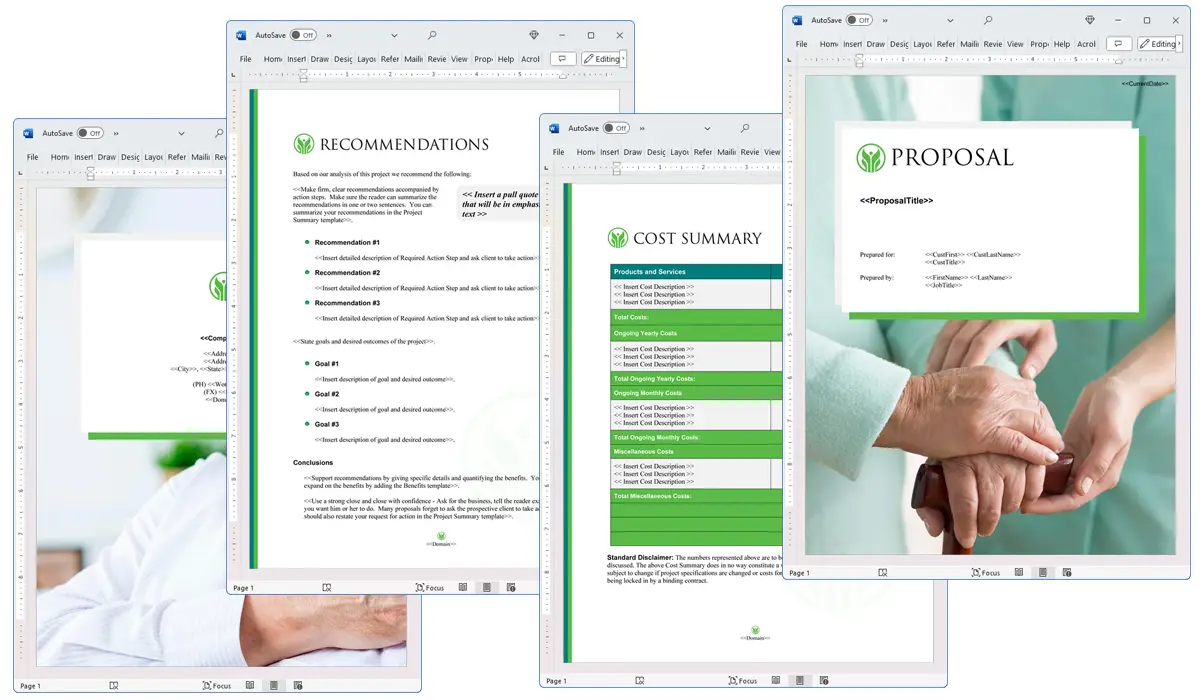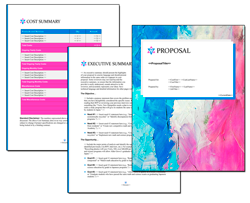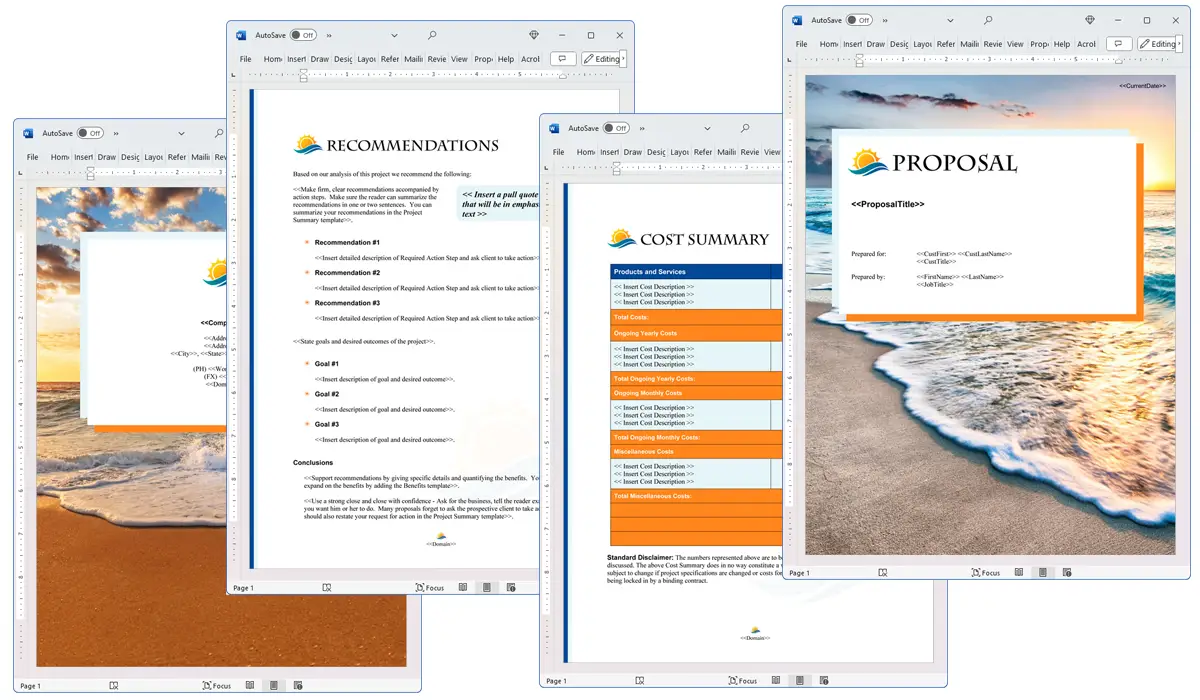What is the Tolerances chapter used for?
Proposal Kit Professional Bundle adds more design themes, all six Contract Packs,
a project management library, and Expert Edition software.

Illustration of Proposal Pack Healthcare #7
We include this Tolerances chapter template in every Proposal Pack, along with thousands more. You assemble this chapter with others in various combinations to create custom-tailored business proposals, plans, reports, and other documents. Proposal Packs apply custom visual designs to the templates, giving the final documents a consistent professional finish.
 DOWNLOADABLE, ONE-TIME COST, NO SUBSCRIPTION FEES
DOWNLOADABLE, ONE-TIME COST, NO SUBSCRIPTION FEES
Overview of the Tolerances Chapter
The Tolerances chapter is an important part of a business proposal, particularly when precision and reliability are paramount. This chapter helps in outlining specific limits within which systems or components must operate to be considered acceptable. It is especially relevant in fields involving engineering, manufacturing, and any scenario where fault tolerance is critical for maintaining operations despite potential failures.
How is the Tolerances Chapter Used?
In a business proposal, the Tolerances chapter is used to define and detail the acceptable limits or deviations from the standard that can be tolerated without affecting the system's functionality or integrity. By including this chapter, businesses can set clear expectations with their clients or partners about the performance and reliability of the proposed solution. It also serves to reassure the recipient that the proposed system adheres to industry standards and is capable of handling anticipated stresses or errors.
What is Included in the Tolerances Chapter?
This chapter typically includes:
- Definition of Terms: Clarifies what is meant by fault tolerance and engineering tolerances withconsidering the situation of the proposal.
- Scope of Tolerance: Details the specific tolerances applicable to the project, such as temperature ranges, dimensional deviations, or timing variations.
- Compliance Standards: References the standards that dictate the tolerances, ensuring that the proposal aligns with recognized benchmarks.
- Impact of Tolerance Limits: Discusses how these tolerances impact the overall system performance and reliability.
- Testing and Verification Methods: Describes how tolerances will be tested and verified during implementation to ensure compliance.
Use Case Examples for the Tolerances Chapter
- Automation: In a proposal for a robotic assembly line, detailing the fault tolerances necessary for robots to handle unexpected interruptions without halting production.
- Manufacturing: Outlining the machining tolerances required in the manufacturing of aerospace components where precise dimensions are critical.
- Fabrication: Specifying tolerances in the fabrication of electronic parts where even minor deviations could lead to significant malfunctions.
- General Information: Providing comprehensive tolerance details in a proposal for a new construction project, ensuring all materials and construction practices meet the necessary structural integrity standards.
Key Takeaways
- The Tolerances chapter is important for proposals that require high precision and reliability.
- It sets clear expectations on the limits within which components or systems must operate.
- This chapter is critical in industries like manufacturing, automation, and fabrication where deviations can affect system integrity.
- Including this chapter helps in assuring clients of adherence to industry standards and operational reliability.
- It provides a basis for testing and verification to ensure compliance with stated tolerances.

Illustration of Proposal Pack Artsy #10
 What Our Clients Say
What Our Clients SayOriginally had little need to write proposals. But business has changed and has become more proposal-intensive. This kit has taken much work out of the writing for our employees. Thanks for making it simple!"
 4.7 stars, based on 841 reviews
4.7 stars, based on 841 reviewsAlternate Chapters
Related Chapters
Document Layouts Using the Tolerances Chapter

The Tolerances chapter and other chapters are integrated into a Word document as illustrated here in the Proposal Pack Nature #7 design theme. There are hundreds of design themes available, and every design theme includes the Tolerances chapter template.
A proper business proposal will include multiple chapters. This chapter is just one of many you can build into your proposal. We include the complete fill-in-the-blank template in our Proposal Pack template collections. We also include a library of sample proposals illustrating how companies in different industries, both large and small, have written proposals using our Proposal Packs. This template will show you how to write the Tolerances.
We include a chapter library for you to build from based on your needs. All proposals are different and have different needs and goals. Pick the chapters from our collection and organize them as needed for your proposal.
Using the Proposal Pack template library, you can create any business proposal, report, study, plan, or document.
 Ian Lauder has been helping businesses write their proposals and contracts for two decades. Ian is the owner and founder of Proposal Kit, one of the original sources of business proposal and contract software products started in 1997.
Ian Lauder has been helping businesses write their proposals and contracts for two decades. Ian is the owner and founder of Proposal Kit, one of the original sources of business proposal and contract software products started in 1997.By Ian Lauder
 Published by Proposal Kit, Inc.
Published by Proposal Kit, Inc.


 Cart
Cart
 Facebook
Facebook YouTube
YouTube X
X Search Site
Search Site